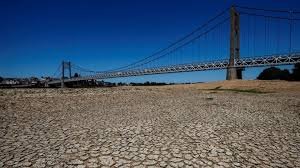July 29, 2025 From shrinking rivers to drying soils, new research reveals that Earth’s continents are experiencing accelerated water loss, marking a serious disturbance in the global water cycle. Long-term satellite data suggests that land-based water stored in ice, snow, soil, rivers, and underground aquifers is vanishing at an alarming rate.
This dramatic change not only threatens global water availability but also disrupts ecosystems, food systems, and geopolitical stability.
A Crisis Unfolding on Land, Not Just at Sea
Much of the world’s climate concern has centered around rising oceans, but the real crisis is now happening on land. According to a comprehensive satellite analysis covering nearly 20 years, terrestrial water storage (TWS) is declining rapidly.
TWS includes all forms of freshwater stored on land: snowpack, ice caps, rivers, lakes, vegetation water, groundwater, and soil moisture. The changes to this storage system point to a deeply unstable hydrological cycle one that no longer behaves in predictable ways.
Mega-Drought Zones Emerging Across Continents
The study identifies four massive dry zones forming across the Northern Hemisphere, with worsening drought conditions and dropping groundwater levels:
- Northern Canada and Northern Russia – Regions once becoming wetter are now reversing course.
- Southwestern North America and Central America – Already arid areas are drying further, with increasing water stress.
- North Africa to Central Asia – A vast stretch covering the Middle East, Europe, Central Asia, and parts of China is now under persistent drying.
- South and Southeast Asia – Groundwater extraction is intensifying in water-scarce zones.
These mega-dry belts are now contributing more freshwater to sea level rise than glaciers and polar ice sheets, signaling a dangerous trend of land-based water loss feeding ocean expansion.
Dry Gets Drier: Groundwater Overuse Becoming Critical
With surface water sources like rivers and lakes drying up, countries and communities are becoming heavily reliant on groundwater. However, unregulated extraction is depleting aquifers at unsustainable rates especially in parts of India, China, the Middle East, and the U.S. Southwest.
This trend poses long-term challenges for agriculture, drinking water, and industrial use, especially in regions that lack proper water governance and climate-resilient planning.

Water Cycle Disruption: Causes and Consequences
Several forces are driving this freshwater crisis:
- Climate Change is altering rainfall patterns and intensifying heat, leading to higher evaporation and more frequent droughts.
- Deforestation and land degradation reduce natural water retention and rainfall recycling.
- Urbanization and agriculture are preventing groundwater recharge and increasing water demand.
As the global water cycle destabilizes, societies may face cascading effects:
- Lower crop yields
- Increased food insecurity
- Ecological collapse in wetlands and river systems
- Rising potential for migration and conflict over shared water resources
Limited Wet Zones Offer Little Relief
While most regions are drying, a few parts of East and Western Sub-Saharan Africa are experiencing slightly wetter conditions, likely due to shifting weather systems.
 Digital Scoop India Official Platform of Digital Scoop India Featuring Latest & Best News #Articles #Bytes #Entertainment #DigitalScoopMagazine
Digital Scoop India Official Platform of Digital Scoop India Featuring Latest & Best News #Articles #Bytes #Entertainment #DigitalScoopMagazine



